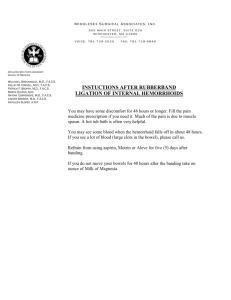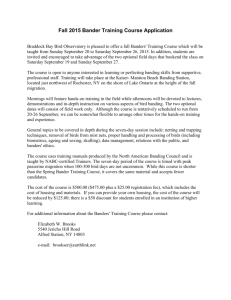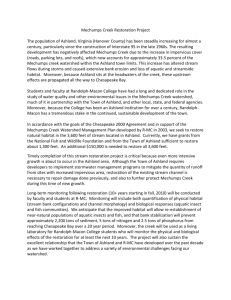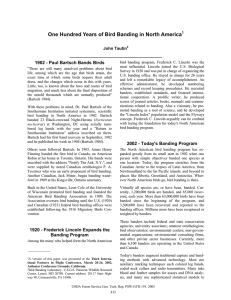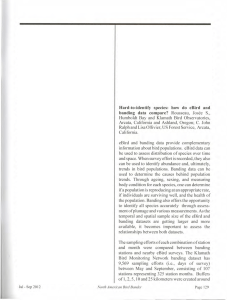Sparrows: 28% were recaptured within 13 weeks of Environmental
advertisement
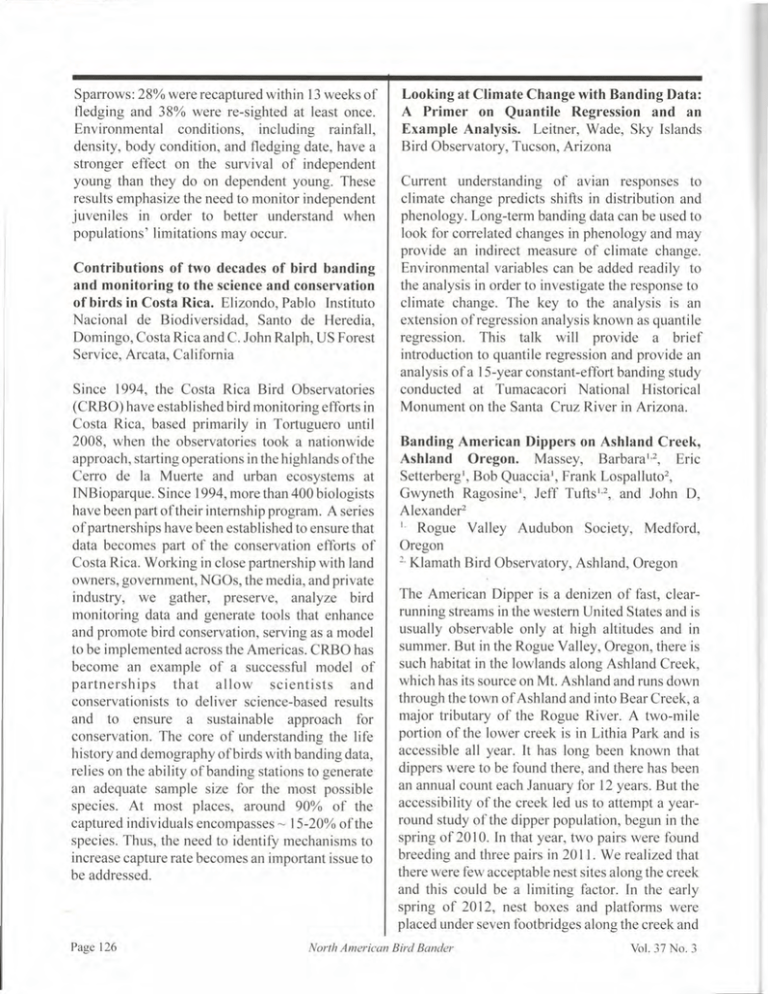
Sparrows: 28% were recaptured within 13 weeks of fledging and 38% were re-sighted at least once. Environmental conditions, including rainfall, density, body condition, and fledging date, have a stronger effect on the survival of independent young than they do on dependent young. These results emphasize the need to monitor independent juveniles in order to better understand when populations' limitations may occur. Contributions of two decades of bird banding and monitoring to the science and conservation of birds in Costa Rica. Elizondo, Pablo Instituto Nacional de Biodiversidad, Santo de Heredia, Domingo, Costa Rica and C. John Ralph, US Forest Service, Arcata, California Since 1994, the Costa Rica Bird Observatories (CRBO) have established bird monitoring efforts in Costa Rica, based primarily in Tortuguero until 2008, when the observatories took a nationwide approach, starting operations in the highlands ofthe Cerro de la Muerte and urban ecosystems at TNBioparque. Since 1994, more than 400 biologists have been part oftheir internship program. A series of partnerships have been established to ensure that data becomes part of the conservation efforts of Costa Rica. Working in close partnership with land owners, government, NGOs, the media, and private industry, we gather, preserve, analyze bird monitoring data and generate tools that enhance and promote bird conservation, serving as a model to be implemented across the Americas. CRBO has become an example of a successful model of partnerships that allow scientists and conservationists to deliver science-based results and to ensure a sustainable approach for conservation. The core of understanding the life history and demography of birds with banding data, relies on the ability of banding stations to generate an adequate sample size for the most possible species. At most places, around 90% of the captured individuals encompasses ~ 15-20% ofthe species. Thus, the need to identify mechanisms to increase capture rate becomes an important issue to be addressed. Page 126 Looking at Climate Change with Banding Data: A Primer on Quantile Regression and an Example Analysis. Leitner, Wade, Sky Islands Bird Observatory, Tucson, Arizona Current understanding of avian responses to climate change predicts shifts in distribution and phenology. Long-term banding data can be used to look for correlated changes in phenology and may provide an indirect measure of climate change. Environmental variables can be added readily to the analysis in order to investigate the response to climate change. The key to the analysis is an extension of regression analysis known as quantile regression. This talk will provide a brief introduction to quantile regression and provide an analysis of a IS-year constant-effort banding study conducted at Tumacacori National Historical Monument on the Santa Cruz River in Arizona. Banding American Dippers on Ashland Creek, Ashland Oregon. Massey, Barbara':", Eric Setterberg', Bob Quaccia', Frank Lospalluto", Gwyneth Ragosine', Jeff Tufts ,,2, and John D, Alexander? I. Rogue Valley Audubon Society, Medford, Oregon 2. Klamath Bird Observatory, Ashland, Oregon The American Dipper is a denizen of fast, clearrunning streams in the western United States and is usually observable only at high altitudes and in summer. But in the Rogue Valley, Oregon, there is such habitat in the lowlands along Ashland Creek, which has its source on Mt. Ashland and runs down through the town of Ashland and into Bear Creek, a major tributary of the Rogue River. A two-mile portion of the lower creek is in Lithia Park and is accessible all year. It has long been known that dippers were to be found there, and there has been an annual count each January for 12 years. But the accessibility of the creek led us to attempt a yearround study of the dipper population, begun in the spring of2010. In that year, two pairs were found breeding and three pairs in 2011. We realized that there were few acceptable nest sites along the creek and this could be a limiting factor. In the early spring of 2012, nest boxes and platforms were placed under seven footbridges along the creek and North American Bird Bander Vol. 37 No.3
